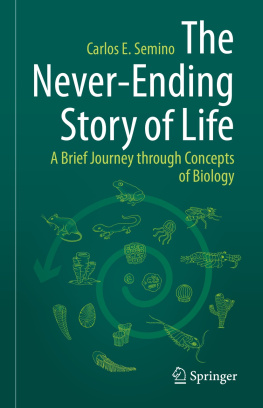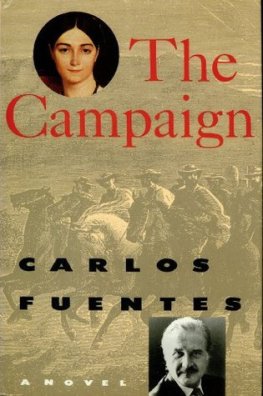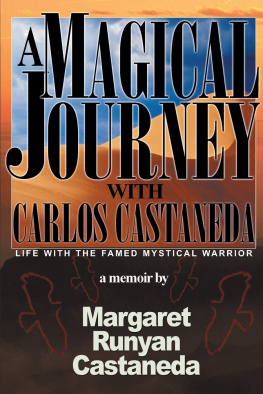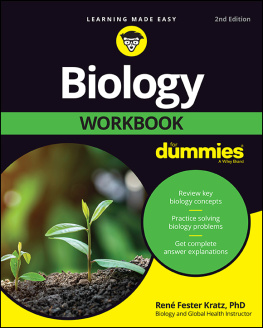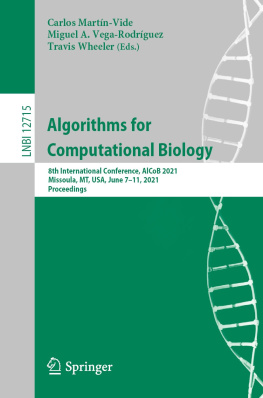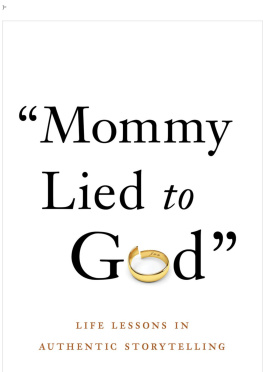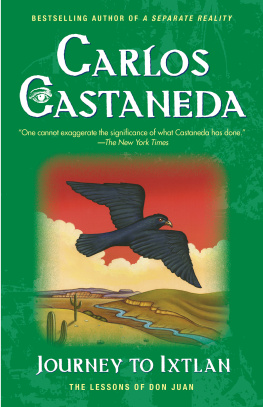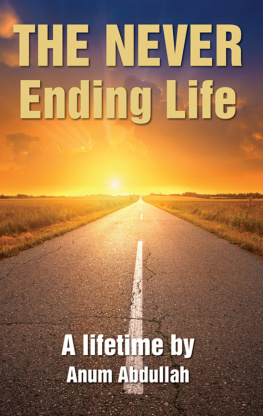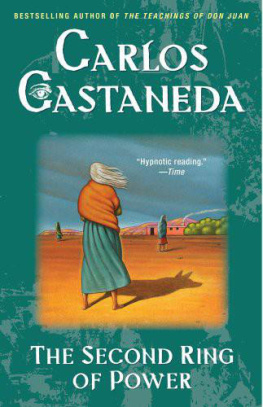Carlos E. Semino - The Never-Ending Story of Life A Brief Journey through Concepts of Biology
Here you can read online Carlos E. Semino - The Never-Ending Story of Life A Brief Journey through Concepts of Biology full text of the book (entire story) in english for free. Download pdf and epub, get meaning, cover and reviews about this ebook. year: 2021, genre: Religion. Description of the work, (preface) as well as reviews are available. Best literature library LitArk.com created for fans of good reading and offers a wide selection of genres:
Romance novel
Science fiction
Adventure
Detective
Science
History
Home and family
Prose
Art
Politics
Computer
Non-fiction
Religion
Business
Children
Humor
Choose a favorite category and find really read worthwhile books. Enjoy immersion in the world of imagination, feel the emotions of the characters or learn something new for yourself, make an fascinating discovery.
- Book:The Never-Ending Story of Life A Brief Journey through Concepts of Biology
- Author:
- Genre:
- Year:2021
- Rating:4 / 5
- Favourites:Add to favourites
- Your mark:
- 80
- 1
- 2
- 3
- 4
- 5
The Never-Ending Story of Life A Brief Journey through Concepts of Biology: summary, description and annotation
We offer to read an annotation, description, summary or preface (depends on what the author of the book "The Never-Ending Story of Life A Brief Journey through Concepts of Biology" wrote himself). If you haven't found the necessary information about the book — write in the comments, we will try to find it.
Carlos E. Semino: author's other books
Who wrote The Never-Ending Story of Life A Brief Journey through Concepts of Biology? Find out the surname, the name of the author of the book and a list of all author's works by series.
The Never-Ending Story of Life A Brief Journey through Concepts of Biology — read online for free the complete book (whole text) full work
Below is the text of the book, divided by pages. System saving the place of the last page read, allows you to conveniently read the book "The Never-Ending Story of Life A Brief Journey through Concepts of Biology" online for free, without having to search again every time where you left off. Put a bookmark, and you can go to the page where you finished reading at any time.
Font size:
Interval:
Bookmark:
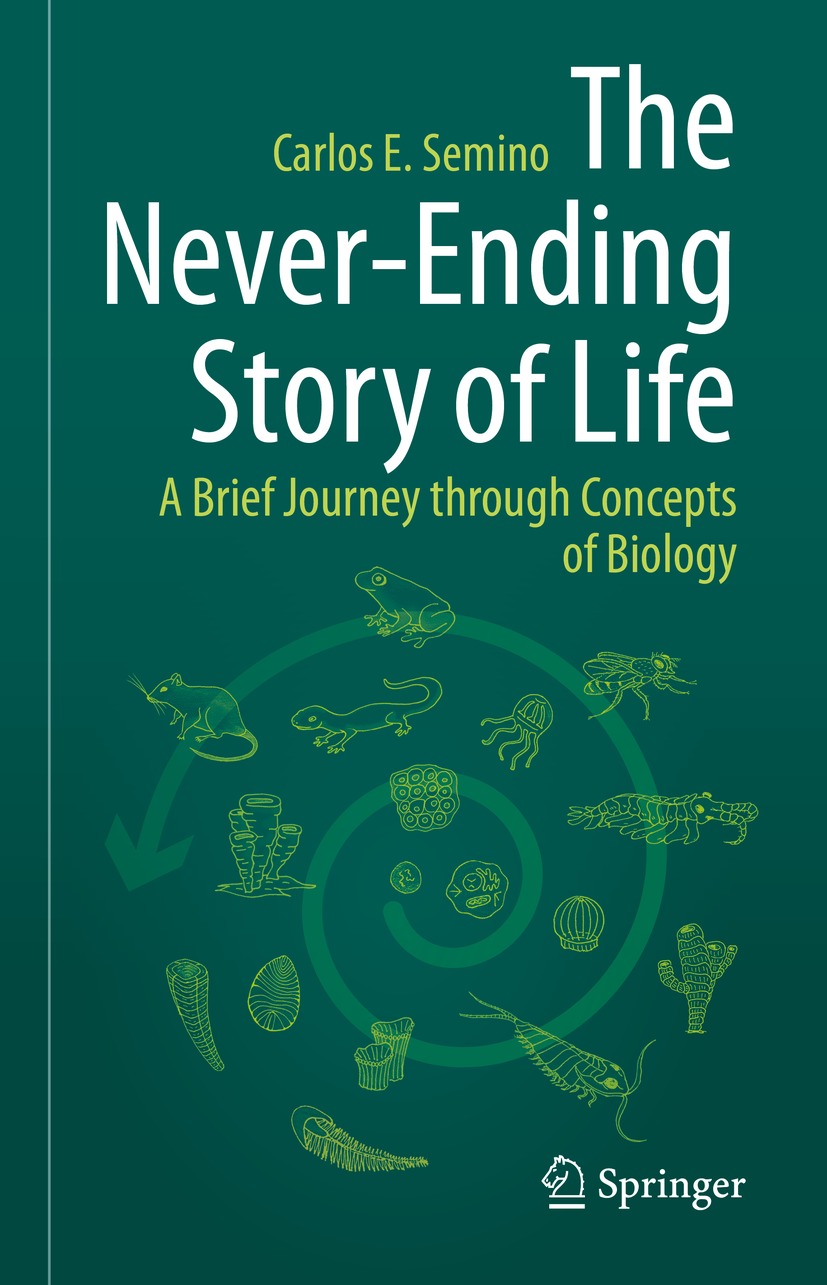

This Springer imprint is published by the registered company Springer Nature Switzerland AG
The registered company address is: Gewerbestrasse 11, 6330 Cham, Switzerland
To my beloved children
Santiago and Alba
For humankind, the most irreducible idea is the concept of life itself. Life is the principal driving force behind many disciplines, including philosophy, literature, biological sciences, medicine, mythology, and theology, but no matter how much we know about it, it will always remain our greatest mystery. Although some scientists study the origins of life to examine the group of pre-biotical, biochemical reactions that may have spontaneously created it, this book begins from the premise that life is a factthat it is everywhere; that it takes infinite forms; and, most importantly, that it is intrinsically self-perpetuating. Rather than exploring how the first living forms emerged in our universe The never-ending story life begins with our first primordial cell ancestor and tells the story of lifes journeyhow it began when that first cell diversified into many other cell types and organisms, and how it has continued until the present day.
This small book is designed to explain complex ideas in biology in a simple way, but not simplistically, with a special emphasis in taking care of the language as well as illustrations that work for all possible readers. Thus, the central concept that this compact but essential book illuminates for biology students and nonbiologists alike is the fact that life is essentially an infinite process, transmitted from generation to generation. Curiously, the strategy that life uses to survive is based on a simple mechanism: it generates a vast amount of highly diverse organisms so that every ecological niche is inhabited by specialized living forms. The remarkable heterogeneity of these organisms ensures that a great proportion of them will be able to adapt to the constantly changing environment. Through this process, life can take infinite biological forms, from simple cells to complex animals, fungi, and plants. Each of these individual organisms has a lifespan and must generate descendants (i.e., offspring) that will be different from their ancestors, because living organisms have intrinsic mechanisms to generate genetic diversity. This diversity is generated when a cell divides to produce two new ones, because genetic changes (i.e., mutations) occur independently during the division process, producing daughter cells that are not exactly identical to the original cell. During this process, life transmits itself to the next generation simply by splitting into two and passing from one cell into the two new ones.
Thus, the book explains how life is passed on during every cell division . It never jumps from one organism to another; instead, it flows on to the next generation. This is a very important concept, because regardless of whether an organism is unicellular or multicellularwhether it is a small bacterium or a whalelife flows exclusively through the process of cell division. This is why cells are the most evolutionary form of life and the smallest building block capable of passing it on. This may be hard to understand at first, but when we consider that even the most complex animals and the largest trees almost all rely on unicellular cells ( gametes ) to transfer life to the next generation, it becomes clear that cell division is the essential mechanism of lifes self-perpetuation. This is also true in some cases where complex structurespieces of tissues rather than single cellsare used to generate more organisms, as in the processes of animal fragmentation and vegetative propagation in plants, where life splits up to continue self-propagating.
In all of these processes, life is immortal , but organisms are not. Each organism has a lifespanhours, days, weeks, or years, depending on the casebut in the end, it must die. The reason for this is simple: organisms have to generate diversity, because this is the only natural way for it to create genetically distinct descendants, and in most multicellular organisms, this process naturally leads to death. Cell division drives growth and development, maintains tissue and organ homeostasis, executes the bodys regeneration and repair, and generates gametes , but it also promotes aging and death. In other words, each organism has an intrinsic program that eventually leads to death. Thus, death is an essential part of life, and each individual organism is a carrier of life that can pass it on to the next generation before dying, thereby continuing with the never-ending story of life.
I would like to thank the many people who have contributed to the organization, editing, revision, drawings, and ideas in this book. In particular, I extend my most sincere thanks to Nausika Betriu, Claire Jarrosson Moral, Alba Costales, Oriol Quintana Rubio, Gustavo Tiscornia, Mariana Resnicoff, Joel Paul, and John Shakespear.
Artificial intelligence containing units
ArArgon
ATPAdenosine 5-triphosphate
BABasal membrane
BYABillion years ago
BYBillion years
Ca2+Calcium
CO2Carbon dioxide
CVCentral vein
CLPCommon lymphoid progenitor cell
CMPCommon myeloid progenitor cell
DNADeoxyribonucleotide acid
ESCsEmbryonic stem cells
ESIEarth similitude index
Font size:
Interval:
Bookmark:
Similar books «The Never-Ending Story of Life A Brief Journey through Concepts of Biology»
Look at similar books to The Never-Ending Story of Life A Brief Journey through Concepts of Biology. We have selected literature similar in name and meaning in the hope of providing readers with more options to find new, interesting, not yet read works.
Discussion, reviews of the book The Never-Ending Story of Life A Brief Journey through Concepts of Biology and just readers' own opinions. Leave your comments, write what you think about the work, its meaning or the main characters. Specify what exactly you liked and what you didn't like, and why you think so.

